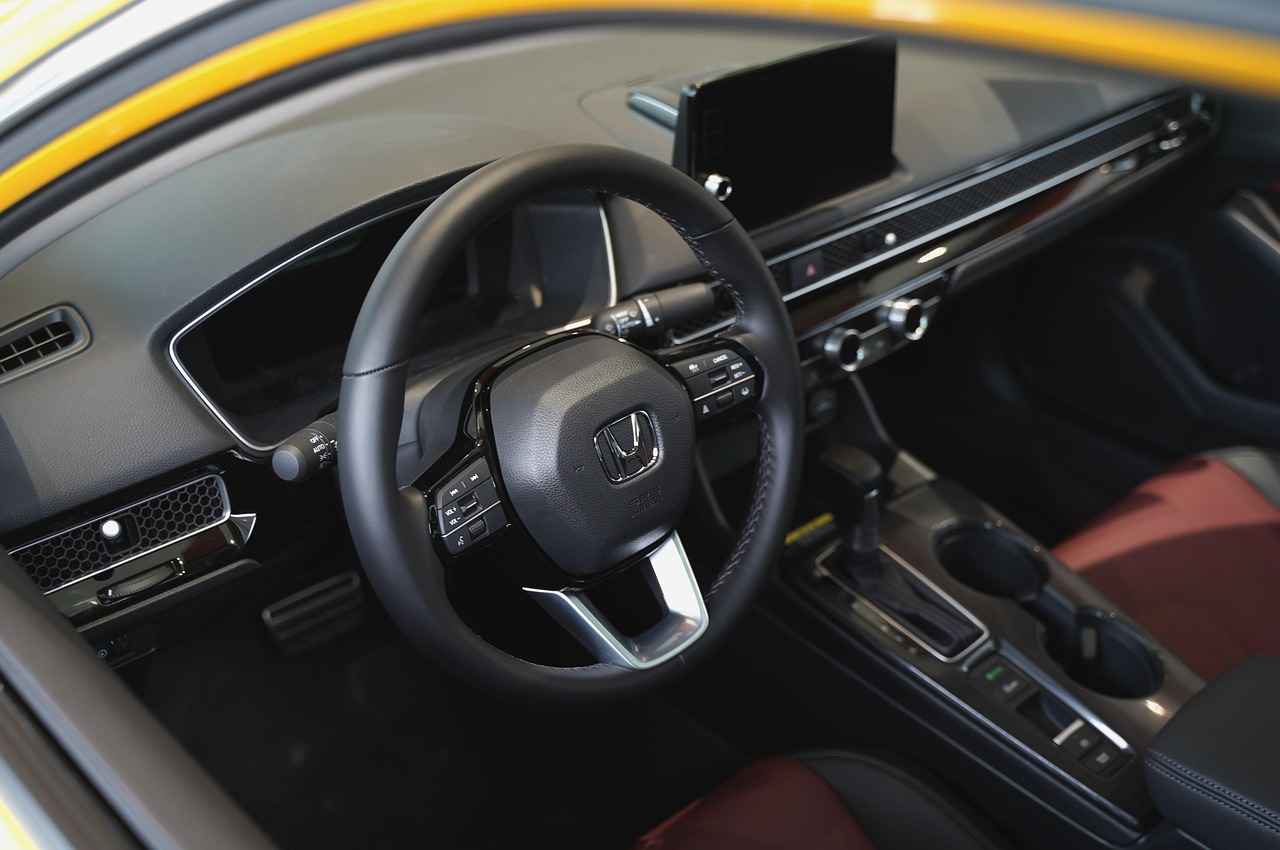This article provides a detailed guide on how to reset the oil light in a 2009 Honda Accord, ensuring that your vehicle’s maintenance is always up to date. Regularly checking and maintaining your vehicle is essential for optimal performance and longevity.
The oil light serves as a critical indicator of your engine’s health. It alerts you when the oil pressure is low, which can lead to severe engine damage if not addressed promptly. Understanding the oil light’s significance can help you maintain your Honda Accord’s engine health and overall performance.
Several factors can trigger the oil light in your Honda Accord:
- Low Oil Levels: Insufficient oil can cause the engine to overheat.
- Oil Changes: After an oil change, the light may need to be reset.
- Sensor Malfunctions: Faulty sensors can mistakenly trigger the oil light.
It’s essential to reset the oil light after performing an oil change or when you notice it illuminated on your dashboard. Ignoring this can lead to confusion about your vehicle’s maintenance needs.
You don’t need specialized tools to reset the oil light. A basic understanding of your vehicle’s dashboard and controls is all that’s required.
Follow these straightforward steps to reset the oil light in your 2009 Honda Accord effectively and safely:
Step 1: Turn on the Ignition- Begin by turning the ignition key to the ON position without starting the engine.Step 2: Locate the Oil Reset Button- Find the oil reset button on the dashboard, usually located near the speedometer or odometer display.Step 3: Press and Hold the Reset Button- Press and hold the reset button until the oil light blinks and then turns off, indicating a successful reset.
When resetting the oil light, avoid these common errors:
- Not turning the ignition to the ON position before resetting.
- Releasing the reset button too early.
- Neglecting to check the oil levels before resetting the light.
If the oil light remains on after following the reset steps, it may indicate an underlying issue that requires further investigation. Check your oil levels and consider consulting a mechanic if the problem persists.
Regular oil changes and maintenance checks are vital for keeping your Honda Accord’s engine in top condition. Change your oil as recommended in the owner’s manual, and always use high-quality oil.
If you’re unsure about resetting the oil light or suspect engine problems, consulting with a professional mechanic is always a wise choice. They can provide a thorough diagnosis and ensure that your vehicle is running smoothly.

Why is the Oil Light Important?
The oil light in your vehicle serves as a crucial warning signal regarding the health and performance of your engine. Understanding why the oil light is important can significantly enhance your ability to maintain your Honda Accord, ensuring its longevity and efficiency.
The oil light is designed to alert you when there are issues related to your vehicle’s oil system. It can indicate low oil pressure, which is vital for lubricating engine components and preventing excessive wear. Ignoring this warning can lead to severe engine damage, costly repairs, and potential safety hazards.
When the oil light illuminates, it signifies that the engine may not be receiving adequate lubrication. This can result in increased friction between moving parts, leading to overheating and premature wear. Maintaining optimal oil levels and quality is essential for engine performance. A well-lubricated engine runs smoothly, providing better fuel efficiency and reduced emissions.
- Low Oil Level: One of the most common reasons for the oil light to activate is a low oil level due to leaks or insufficient oil changes.
- Oil Pump Failure: If the oil pump is malfunctioning, it may not circulate oil effectively, triggering the oil light.
- Oil Quality: Old or degraded oil can lose its lubricating properties, prompting the oil light to turn on.
- Sensor Issues: Sometimes, the oil light may activate due to a faulty oil pressure sensor, rather than an actual oil issue.
Regular oil changes are essential not only for keeping the oil light off but also for maintaining overall engine health. Fresh oil ensures that all engine components are adequately lubricated, reducing friction and heat buildup. It also helps remove contaminants that accumulate over time, contributing to a cleaner and more efficient engine.
To prevent your oil light from illuminating unexpectedly, regularly check your oil levels. This can be done easily by:
1. Parking your vehicle on a level surface.2. Opening the hood and locating the dipstick.3. Pulling out the dipstick, wiping it clean, reinserting it, and then checking the oil level against the markings.
Doing this monthly can help you catch potential issues before they escalate.
If the oil light activates while driving, it’s crucial to take immediate action:
- Pull over safely and turn off the engine.
- Check the oil level using the dipstick.
- If the oil level is low, add oil as needed.
- If the light remains on after adding oil, or if you suspect a mechanical issue, consult a professional mechanic.
In summary, understanding the significance of the oil light is key to maintaining your Honda Accord’s engine health. Regular monitoring and timely interventions can prevent serious engine problems, ensuring your vehicle remains reliable and efficient.

What Triggers the Oil Light?
The oil light in your Honda Accord serves as a crucial indicator of your vehicle’s oil system health. Understanding what triggers this warning light is essential for maintaining your car’s performance and longevity. In this section, we will explore the various factors that can cause the oil light to illuminate, ensuring that you are well-informed and prepared to take action.
Several factors can trigger the oil light in your Honda Accord, including:
- Low Oil Levels: One of the most common reasons for the oil light to turn on is low oil levels. If your engine oil is below the recommended level, it can lead to inadequate lubrication, which may cause engine damage. Regularly checking your oil levels can help prevent this issue.
- Oil Changes: After an oil change, the oil light may remain on if it hasn’t been reset. This is a simple oversight that can be easily corrected by following the reset procedure specific to your vehicle model.
- Sensor Malfunctions: Sometimes, the oil light may illuminate due to a malfunctioning oil pressure sensor. If the sensor is faulty, it may send incorrect signals to your dashboard, leading to confusion. It’s important to have a professional diagnose sensor issues to ensure accurate readings.
- Oil Quality: The quality of the oil used in your Honda Accord can also affect the oil light. Old or contaminated oil may not provide adequate protection for your engine, prompting the oil light to activate. Regular oil changes using high-quality oil can mitigate this risk.
- Engine Temperature: Overheating can also cause the oil light to come on. If your engine is running hotter than normal, it can lead to oil breakdown, reducing its effectiveness. Monitoring your engine temperature and addressing any cooling system issues is vital.
- Oil Leaks: If there are any oil leaks in your vehicle, this can lead to a drop in oil levels and trigger the oil light. Regular inspections for leaks can help catch this issue early before it leads to more severe engine problems.
Being aware of these triggers not only helps you understand why the oil light may be on but also empowers you to take appropriate actions. If the oil light does come on, it is crucial to address the issue promptly to avoid potential engine damage.
In summary, the oil light in your Honda Accord can be triggered by a variety of factors, including low oil levels, the need for an oil change, sensor malfunctions, oil quality, engine temperature issues, and oil leaks. By staying vigilant and proactive about your vehicle’s oil system, you can help ensure your Honda Accord remains in optimal condition.

When Should You Reset the Oil Light?
Maintaining your vehicle’s health is essential for its longevity and performance. One critical aspect of vehicle maintenance is keeping track of the oil light indicator. Knowing when to reset the oil light not only helps in ensuring that your engine operates smoothly but also aids in preventing potential damage that can arise from neglecting oil maintenance.
The oil light serves as a crucial alert system for your vehicle. When it illuminates, it signifies that the oil needs attention, either due to low levels or the need for a change. Resetting the oil light after an oil change or maintenance ensures that you have an accurate indication of your vehicle’s oil status. Ignoring this can lead to confusion regarding when the next oil change is due, potentially jeopardizing your engine’s health.
- The oil light may remain illuminated even after an oil change, leading to unnecessary concern.
- You may overlook the next oil change, thinking it is still due when it’s not.
- It can mask other potential problems that may arise with the engine.
Generally, the oil light should be reset every time you perform an oil change. This practice helps maintain an accurate record of your vehicle’s oil health. However, if you notice the oil light turning on frequently without a recent oil change, it may indicate a deeper issue that requires immediate attention.
Several factors can trigger the oil light in your Honda Accord:
- Low Oil Levels: This is the most common reason for the oil light to activate.
- Oil Change Intervals: If the oil change is overdue, the light will remind you to take action.
- Sensor Malfunctions: Sometimes, a faulty sensor can cause the oil light to illuminate without any actual oil issue.
Monitoring your oil levels and condition is vital. You can check the oil level using the dipstick, and if the oil appears dark or gritty, it’s time for a change. Additionally, listening for unusual engine noises can also indicate that your oil may be due for a change.
Resetting the oil light is a straightforward process:
- Turn the ignition key to the ON position without starting the engine.
- Locate the oil reset button on the dashboard.
- Press and hold the reset button until the oil light blinks and turns off.
When resetting the oil light, avoid the following mistakes:
- Not turning the ignition to the correct position.
- Failing to hold the reset button long enough.
- Ignoring the oil light if it remains on after resetting.
If the oil light does not turn off after following the reset procedure, it may indicate an underlying issue that requires further investigation. Consulting a professional mechanic can help identify and resolve any potential problems.
In summary, understanding when to reset the oil light is vital for maintaining your vehicle’s health. Regular checks and timely resets can significantly enhance your engine’s performance and longevity.

Tools Needed for Resetting the Oil Light
When it comes to maintaining your vehicle, understanding how to reset the oil light is essential for ensuring that your Honda Accord remains in optimal condition. You might think that resetting the oil light requires specialized tools or equipment, but in reality, you don’t need specialized tools to reset the oil light; a simple understanding of your vehicle’s dashboard will suffice. This article will guide you through the necessary tools and steps, making the process straightforward and accessible.
Your vehicle’s dashboard is equipped with various indicators that provide vital information about your car’s performance. Familiarizing yourself with these indicators, especially the oil light, can help you address issues before they escalate into more significant problems. The oil light typically indicates that the oil level is low or that an oil change is due. Knowing how to reset it properly ensures that you stay on top of your vehicle’s maintenance.
- No Special Tools Required: As mentioned, you don’t need any specialized tools for this task. Just your vehicle’s ignition key and your understanding of the dashboard layout.
- Owner’s Manual: Having your Honda Accord’s owner’s manual handy can be beneficial. It provides information specific to your vehicle model and year, including the location of the oil reset button.
- Basic Knowledge of Dashboard Lights: Understanding what each light means can help you determine when it’s appropriate to reset the oil light.
Resetting the oil light is a simple process that involves a few straightforward steps. By following these steps, you can ensure that the oil light resets correctly, allowing you to monitor your vehicle’s oil status effectively.
- Turn on the Ignition: Start by turning the ignition key to the ON position without cranking the engine. This will allow you to access the dashboard settings.
- Locate the Oil Reset Button: The oil reset button is typically found near the speedometer or odometer. Refer to your owner’s manual if you have difficulty locating it.
- Press and Hold the Reset Button: Press and hold the reset button until the oil light blinks and then turns off, indicating a successful reset.
While resetting the oil light is relatively easy, there are a few common mistakes that can hinder the process:
- Not Turning the Ignition On: Ensure the ignition is in the correct position before attempting the reset.
- Releasing the Button Too Soon: Hold the reset button until you see the light blink and turn off.
If the oil light remains illuminated after following the reset steps, it may indicate an underlying issue. In such cases, it is essential to check the oil levels or consult with a professional mechanic to diagnose potential problems.
Regular oil changes and maintenance checks are vital for keeping your Honda Accord’s engine in top condition. Staying proactive about oil levels and quality can prevent future issues and ensure a smooth driving experience.
If you’re unsure about the reset process or suspect engine issues, consulting a professional mechanic is always a wise choice. They can provide expert insights and ensure that your vehicle is running optimally.

Step-by-Step Guide to Reset the Oil Light
Resetting the oil light in your 2009 Honda Accord is a crucial maintenance task that ensures you stay on top of your vehicle’s health. This guide will walk you through the process step-by-step, making it easy and safe to perform.
Follow these straightforward steps to reset the oil light in your 2009 Honda Accord effectively and safely:
- Step 1: Turn on the Ignition
Begin by inserting your ignition key and turning it to the ON position without starting the engine. This action allows you to access the dashboard settings necessary for the reset process. - Step 2: Locate the Oil Reset Button
Find the oil reset button on your dashboard. It is typically located near the speedometer or odometer display. Familiarizing yourself with this button will make the reset process smoother. - Step 3: Press and Hold the Reset Button
Once you have located the reset button, press and hold it. Keep holding it until the oil light begins to blink and then turns off completely. This indicates that the reset was successful.
The oil light serves as a vital indicator of your vehicle’s oil status. Resetting it after an oil change or maintenance ensures that the system accurately reflects the current state of your engine’s oil. Ignoring this light can lead to potential engine issues, making it essential to reset it promptly.
While resetting the oil light is a straightforward process, some common errors can complicate it:
- Failing to turn the ignition to the correct position.
- Not holding the reset button long enough.
- Assuming the oil light reset indicates that an oil change is not necessary.
If the oil light remains illuminated after following the reset steps, it may indicate an underlying issue. Check the oil levels and consider consulting a professional mechanic to diagnose any potential problems.
Regular oil changes and maintenance checks are vital for keeping your Honda Accord’s engine in top condition. Always refer to your owner’s manual for recommended oil change intervals and specifications.
If you’re unsure about the reset process or if the oil light continues to stay on despite your efforts, it’s wise to consult with a professional mechanic. They can provide a thorough inspection and ensure that your vehicle is running smoothly.
By following these guidelines, you can efficiently reset the oil light in your 2009 Honda Accord and maintain the health of your vehicle. Regular maintenance is key to prolonging the life of your engine and ensuring optimal performance.
Step 1: Turn on the Ignition
When it comes to maintaining your 2009 Honda Accord, one of the essential tasks is resetting the oil light. This simple process ensures that your vehicle’s maintenance schedule is accurately reflected on the dashboard, allowing you to keep track of oil changes and engine health. The first step in this procedure is crucial: turning on the ignition.
Turning on the ignition is a vital step because it allows the vehicle’s electrical systems to power up, enabling you to access the dashboard settings necessary for the reset process. Without this action, the oil light reset function will not be available.
To begin, insert the ignition key into the ignition switch. It’s important to turn the key to the ON position without starting the engine. This is different from the START position, which would engage the engine. When you turn the key to the ON position, you will notice that the dashboard lights up, including the oil light.
- The dashboard displays various warning lights, including the oil light.
- It allows you to access the vehicle’s settings, including the oil reset feature.
- Ensure that the vehicle is in park or neutral for safety during this process.
Failing to turn the ignition key to the correct position can lead to complications in the reset process. Some common issues include:
- The oil light remains illuminated.
- The reset button is unresponsive.
- Dashboard displays incorrect messages.
Here are some practical tips to ensure a smooth ignition process:
- Ensure that the key is fully inserted into the ignition.
- Do not turn the key too quickly; a steady turn is more effective.
- Keep the vehicle in a safe position, preferably on a flat surface.
Once you have successfully turned on the ignition, your next step is to locate the oil reset button on the dashboard. This button is typically found near the speedometer or odometer display. Pressing and holding this button will initiate the reset process for the oil light.
In summary, turning on the ignition is the first step in resetting the oil light on your 2009 Honda Accord. This action is crucial for accessing the necessary settings and ensuring that your vehicle remains in optimal condition. Following the correct procedure will help you avoid complications and maintain your vehicle’s performance.
ON
How to Reset Oil Light on Honda Accord 2009
This article provides a step-by-step guide on resetting the oil light in a 2009 Honda Accord, ensuring your vehicle maintenance is up to date.
Why is the Oil Light Important?
Understanding the significance of the oil light can help you maintain your Honda Accord’s engine health and overall performance. The oil light serves as a crucial indicator that alerts you when your engine oil levels are low or when there is an issue with the oil pressure. Ignoring this warning can lead to severe engine damage.
What Triggers the Oil Light?
Several factors can trigger the oil light in your Honda Accord, including:
- Low oil levels
- Oil changes
- Sensor malfunctions
Being aware of these triggers can help you address issues promptly and maintain your vehicle’s performance.
When Should You Reset the Oil Light?
Knowing when to reset the oil light is crucial for maintaining proper vehicle maintenance. Typically, you should reset the oil light after performing an oil change or when you have topped off the oil levels. This ensures that you are accurately tracking your oil maintenance schedule.
Tools Needed for Resetting the Oil Light
You don’t need specialized tools to reset the oil light; a simple understanding of your vehicle’s dashboard will suffice. All you need is your vehicle key and a little patience.
Step-by-Step Guide to Reset the Oil Light
Follow these straightforward steps to reset the oil light in your 2009 Honda Accord effectively and safely:
Step 1: Turn on the IgnitionBegin by turning the ignition key to the ON position without starting the engine to access the dashboard settings.Step 2: Locate the Oil Reset ButtonFind the oil reset button on the dashboard, usually located near the speedometer or odometer display.Step 3: Press and Hold the Reset ButtonPress and hold the reset button until the oil light blinks and then turns off, indicating a successful reset.
Common Mistakes to Avoid
Avoiding common errors during the reset process can help ensure that the oil light resets successfully without complications. Make sure you are in the correct position when attempting to reset the light, and do not turn off the ignition prematurely.
What to Do if the Oil Light Doesn’t Reset?
If the oil light remains on after following the reset steps, it may indicate an underlying issue that requires further investigation. Check your oil levels and consider consulting your owner’s manual for additional troubleshooting steps.
Maintaining Your Honda Accord’s Oil System
Regular oil changes and maintenance checks are vital for keeping your Honda Accord’s engine in top condition. Schedule oil changes every 5,000 to 7,500 miles, depending on your driving habits and oil type.
When to Seek Professional Help
If you’re unsure about resetting the oil light or suspect engine problems, consulting with a professional mechanic is always a wise choice. They can provide expert diagnostics and ensure that your vehicle remains in optimal condition.
position without starting the engine to access the dashboard settings.
Resetting the oil light on your 2009 Honda Accord is an essential maintenance task that ensures your vehicle is operating optimally. This guide will walk you through the process step-by-step, making it easy to keep your car in top shape.
The oil light serves as a crucial indicator of your engine’s health. It alerts you when oil levels are low or when there is an issue with the oil pressure. Ignoring this warning can lead to serious engine damage, making it vital to address any alerts promptly.
Several factors can trigger the oil light in your Honda Accord:
- Low oil levels
- Oil changes
- Sensor malfunctions
Understanding these triggers helps you respond appropriately and maintain your vehicle’s performance.
It’s essential to reset the oil light after performing an oil change or when you notice it illuminated on your dashboard. This action helps keep track of your maintenance schedule and ensures that you are aware of your vehicle’s oil status.
You do not need any specialized tools to reset the oil light. A basic understanding of your vehicle’s dashboard and controls is sufficient.
Follow these straightforward steps to reset the oil light in your 2009 Honda Accord:
Step 1: Turn on the Ignition- Start by turning the ignition key to the ON position without starting the engine.Step 2: Locate the Oil Reset Button- Find the oil reset button on the dashboard, usually near the speedometer or odometer display.Step 3: Press and Hold the Reset Button- Press and hold the reset button until the oil light blinks and then turns off, indicating a successful reset.
Avoid these common errors during the reset process:
- Not turning the ignition to the ON position
- Releasing the reset button too soon
- Ignoring the oil light if it remains on after resetting
If the oil light remains illuminated after following the reset steps, it may indicate an underlying issue with your vehicle. In such cases, it’s advisable to consult a professional mechanic to diagnose and address potential problems.
Regular oil changes and maintenance checks are vital for keeping your Honda Accord’s engine in top condition. It is recommended to change the oil every 5,000 to 7,500 miles, depending on your driving habits and oil type.
If you’re unsure about resetting the oil light or suspect engine problems, it’s always wise to consult with a professional mechanic. They can provide expert advice and ensure your vehicle remains in optimal condition.
Step 2: Locate the Oil Reset Button
When it comes to maintaining your 2009 Honda Accord, one of the essential tasks is resetting the oil light after an oil change. This simple process ensures that your vehicle’s dashboard reflects accurate information regarding your engine’s oil status. In this section, we will explore how to effectively locate the oil reset button on your dashboard.
The oil reset button is typically situated on the dashboard, close to the speedometer or the odometer display. It may not be immediately obvious, especially for those who are not familiar with the layout of their vehicle’s dashboard. Here are some tips to help you identify the button:
- Look for the Symbols: The oil reset button often features an oil can symbol or the word “Reset.” Familiarizing yourself with these symbols can make the search easier.
- Check the User Manual: If you’re having trouble finding the button, consult your vehicle’s user manual. This resource provides detailed diagrams and descriptions of dashboard components.
- Observe the Dashboard Layout: The button is usually grouped with other dashboard controls, so take a moment to examine the area around the speedometer and odometer.
Knowing the precise location of the oil reset button is crucial for several reasons:
- Timely Maintenance: Regularly resetting the oil light after an oil change helps keep track of your maintenance schedule.
- Engine Health: A functioning oil light ensures you are aware of when to check oil levels, preventing potential engine damage.
- Driver Awareness: Keeping your dashboard indicators accurate allows for better monitoring of your vehicle’s overall health.
Once you have successfully located the oil reset button, the next step is to reset the oil light. Here’s a quick overview of what you need to do:
1. Turn the ignition key to the ON position without starting the engine.2. Press and hold the oil reset button until the oil light blinks and then turns off.3. Release the button and turn off the ignition.
This process not only ensures that your dashboard reflects the most accurate information but also reinforces the importance of regular vehicle maintenance.
Some drivers may encounter challenges while trying to locate the oil reset button:
- Hidden Controls: In some models, the button may be less accessible, requiring you to adjust your seating position for better visibility.
- Dashboard Variations: Depending on the trim level of your Honda Accord, the dashboard layout may differ, making it harder to find the button.
- Distraction: It’s easy to become distracted by other dashboard lights or notifications, so focus is key.
By understanding where to find the oil reset button and its significance, you can ensure that your Honda Accord remains in optimal condition. Regular maintenance checks, including oil changes and light resets, contribute to the longevity and performance of your vehicle.
Step 3: Press and Hold the Reset Button
Resetting the oil light on your 2009 Honda Accord is a simple yet essential task that ensures your vehicle’s maintenance is properly tracked. One of the crucial steps in this process is to press and hold the reset button. This action is vital for confirming that the oil light has been successfully reset, allowing you to keep your vehicle in optimal condition.
Once you have turned the ignition key to the ON position without starting the engine, the next step is to locate the oil reset button. This button is typically situated near the speedometer or odometer on your dashboard. It is important to familiarize yourself with its location before proceeding.
- Ensure the ignition is in the ON position.
- Locate the oil reset button on the dashboard.
- Press and hold the button firmly.
As you press and hold the reset button, you will notice the oil light begin to blink. This blinking indicates that the system is processing your reset command. Continue to hold the button until the oil light turns off completely. This change signifies that the reset was successful and your maintenance reminder has been cleared.
Holding the reset button is crucial because it triggers the vehicle’s onboard computer to acknowledge the command. If you release the button too early, the reset process may not complete, causing the oil light to remain illuminated. This could lead to confusion regarding your vehicle’s maintenance status.
While the process is straightforward, some common mistakes can occur:
- Releasing the button too soon: Ensure you hold the button until the light turns off.
- Incorrect ignition position: Make sure the ignition is in the ON position.
- Ignoring the light: If the light does not turn off after following the steps, further investigation may be necessary.
If the oil light remains on after you have successfully pressed and held the reset button, it may indicate a more serious issue. This could involve low oil levels, a faulty oil sensor, or other engine-related problems. In such cases, it is advisable to check your oil levels and consult a professional mechanic if necessary.
Regular maintenance is key to keeping your Honda Accord running smoothly. Ensure you perform oil changes at recommended intervals and monitor oil levels to prevent engine damage. Following these practices will not only enhance the longevity of your vehicle but also improve its overall performance.
In conclusion, resetting the oil light in your 2009 Honda Accord is a straightforward process that requires attention to detail, particularly during the step of pressing and holding the reset button. By following the outlined steps and understanding the importance of this action, you can maintain your vehicle’s health effectively.
Common Mistakes to Avoid
Resetting the oil light in your 2009 Honda Accord is a straightforward process, but many vehicle owners encounter issues due to a few common mistakes. Understanding these errors can ensure a smooth reset and help maintain your vehicle’s performance.
- Not Following the Correct Sequence: One of the most frequent errors is not adhering to the proper sequence of steps. Always start by turning the ignition to the ON position without starting the engine. Skipping this step can prevent the reset process from initiating.
- Ignoring the Oil Reset Button: Many people overlook the oil reset button’s location. It is typically situated near the speedometer or odometer. Familiarize yourself with your dashboard layout to avoid wasting time searching for it.
- Releasing the Button Too Soon: When pressing and holding the reset button, it is crucial to hold it until the oil light blinks and then turns off. Releasing it too early may result in an unsuccessful reset.
- Failing to Check Oil Levels: Before resetting the oil light, ensure that your oil levels are adequate. If the oil is low, the light will remain illuminated even after a reset, signaling that you need to add more oil.
- Neglecting Regular Maintenance: Resetting the oil light does not replace the need for regular oil changes. Ignoring routine maintenance can lead to engine problems, making it essential to keep up with oil changes as per your vehicle’s service schedule.
- Assuming the Light is Just a Reset Issue: If the oil light continues to stay on after a reset, it could indicate a more serious issue, such as a malfunctioning sensor or oil pressure problems. It’s vital to investigate further instead of assuming it’s just a reset error.
By being aware of these common mistakes, you can ensure that the oil light reset process goes smoothly and that your Honda Accord remains in optimal condition. Taking the time to understand the correct procedures and maintaining your vehicle will not only help reset the oil light successfully but also contribute to the longevity and performance of your engine.
What to Do if the Oil Light Doesn’t Reset?
When troubleshooting your Honda Accord, one of the most concerning indicators is the oil light. If you have followed the reset steps and the oil light remains illuminated, it is crucial to understand what this could mean for your vehicle’s health. Ignoring this warning could potentially lead to severe engine damage, so addressing the issue promptly is essential.
The oil light serves as a critical warning system for your vehicle, alerting you to potential issues with the engine’s oil system. If the light persists after a reset, it may indicate that your engine is experiencing low oil pressure, which could be due to various factors such as:
- Oil Leaks: A leak can significantly reduce oil levels, leading to inadequate lubrication.
- Oil Quality: Old or contaminated oil can affect pressure and performance.
- Faulty Sensors: Sometimes, the sensor that detects oil pressure may malfunction, causing a false alarm.
If the oil light does not turn off after you have attempted to reset it, follow these steps:
- Check Oil Levels: Begin by checking the oil level using the dipstick. Ensure that the oil is at the recommended level for your vehicle.
- Inspect for Leaks: Look for visible signs of oil leaks under your vehicle or around the engine.
- Change the Oil: If it has been a while since your last oil change, consider replacing the oil and filter to ensure optimal performance.
- Examine the Oil Pressure Sensor: If the oil levels are adequate, the sensor might need inspection or replacement.
If you are unable to identify the issue or if the oil light remains on despite taking the above steps, it is advisable to seek professional assistance. A qualified mechanic can perform a thorough diagnostic to uncover any underlying problems, such as:
- Engine wear or damage
- Oil pump failure
- Electrical issues affecting the oil pressure sensor
To prevent the oil light from becoming a recurring issue, consider implementing the following maintenance practices:
- Regular Oil Changes: Change your oil according to the manufacturer’s recommendations to keep your engine running smoothly.
- Routine Inspections: Regularly check your vehicle for leaks and monitor oil levels.
- Use Quality Oil: Always use the recommended oil type and quality for your Honda Accord.
In conclusion, while the oil light serves as an important indicator of your vehicle’s health, it is essential to respond appropriately when it remains on after a reset. By following the outlined steps and seeking professional help when necessary, you can ensure your Honda Accord remains in optimal condition for years to come.

Maintaining Your Honda Accord’s Oil System
Maintaining your Honda Accord’s oil system is essential for ensuring the longevity and performance of your vehicle. Regular oil changes and maintenance checks are not just routine tasks; they are vital for keeping your engine in optimal condition and preventing future issues. This article delves into the importance of oil maintenance, how to effectively manage it, and why it matters for your Honda Accord.
Oil acts as the lifeblood of your engine, providing lubrication to reduce friction and wear. Over time, oil can become contaminated with dirt and debris, losing its effectiveness. Regular oil changes ensure that your engine runs smoothly and efficiently. Failing to maintain your oil system can lead to significant engine damage, costly repairs, and reduced vehicle performance.
The frequency of oil changes can depend on several factors, including driving habits and the type of oil used. Generally, it is recommended to change your oil every 3,000 to 7,500 miles or every six months, whichever comes first. However, always refer to your owner’s manual for specific guidelines tailored to your Honda Accord.
- Conventional Oil: Suitable for older models with simple engine designs.
- Synthetic Oil: Offers superior protection and performance, ideal for modern engines.
- Blended Oil: A combination of conventional and synthetic oil, providing a balance of performance and cost.
Choosing the right oil type can enhance your engine’s performance and efficiency.
Being proactive about oil maintenance involves recognizing the signs that your oil needs changing. Look out for:
- Dark or Gritty Oil: Fresh oil is typically amber and clear. If it appears dark or gritty, it’s time for a change.
- Unusual Engine Noises: If your engine sounds louder than usual, it may indicate insufficient lubrication.
- Oil Pressure Warning Light: If this light appears on your dashboard, check your oil levels immediately.
Regularly checking your oil level is a simple yet crucial task. Here’s how you can do it:
1. Park your vehicle on a level surface.2. Open the hood and locate the dipstick.3. Remove the dipstick and wipe it clean.4. Reinsert the dipstick and remove it again to check the oil level.5. If the oil is below the recommended level, add oil as needed.
When it comes to oil maintenance, there are several common pitfalls to avoid:
- Neglecting to Check Oil Levels: Make it a habit to check your oil levels regularly.
- Using the Wrong Oil Type: Always refer to your owner’s manual for specifications.
- Skipping Oil Changes: Adhering to the recommended schedule can prevent costly repairs.
If you’re unsure about your oil maintenance or suspect that your engine may have issues, it’s wise to consult with a professional mechanic. They can provide expert insights and ensure that your Honda Accord remains in top condition.
In summary, maintaining your Honda Accord’s oil system is not just about changing oil; it’s about understanding its importance, recognizing the signs of trouble, and taking proactive measures to ensure your engine’s health. By following these guidelines, you can help prevent future issues and enjoy a smooth driving experience.

When to Seek Professional Help
When it comes to maintaining your vehicle, understanding when to seek professional help is crucial for the longevity and performance of your Honda Accord. While many car owners are comfortable handling minor issues, certain situations warrant the expertise of a qualified mechanic.
One of the primary reasons to consult a professional is if you notice any unusual signs of engine trouble. Strange noises, such as knocking or grinding sounds, can indicate serious issues that need immediate attention. Additionally, if you experience reduced performance or notice your vehicle struggling to accelerate, it’s essential to have a mechanic examine it.
Oil is the lifeblood of your engine, and maintaining optimal oil levels is vital. If your oil light comes on frequently, it may suggest low oil levels or a leak. While resetting the oil light can be a simple task, if the light persists, it’s advisable to consult with a professional. Ignoring this warning could lead to severe engine damage.
If you’ve followed the steps to reset your oil light and it remains illuminated, this could indicate a deeper issue. Potential causes might include a malfunctioning oil pressure sensor or other engine-related problems. In such cases, a mechanic can conduct a thorough diagnostic to identify and resolve the issue effectively.
Professional mechanics have access to advanced diagnostic tools that can provide a comprehensive analysis of your vehicle’s health. These tools can detect error codes that may not be visible through standard checks. This expertise ensures that any underlying issues are addressed before they escalate into costly repairs.
Regular maintenance checks can save you money in the long run. By scheduling routine inspections with a professional, you can catch potential problems early and avoid more extensive repairs later. Mechanics can also provide valuable insights into your vehicle’s overall condition and recommend the best practices for its care.
It’s always better to err on the side of caution. If you’re unsure about any aspect of your vehicle’s performance, don’t hesitate to reach out to a professional mechanic. Their expertise can provide peace of mind, ensuring that your Honda Accord remains in excellent condition.
In conclusion, while many vehicle issues can be managed independently, knowing when to seek professional help is vital for maintaining your Honda Accord. If you suspect engine problems or find yourself uncertain about resetting the oil light, consulting with a professional mechanic is always a wise choice. Their knowledge and experience can help safeguard your vehicle’s performance and longevity.

Frequently Asked Questions
- How often should I reset the oil light in my Honda Accord?
It’s a good practice to reset the oil light every time you change your oil. This ensures that the oil maintenance reminders are accurate and helps keep track of your vehicle’s maintenance schedule.
- What should I do if the oil light comes back on after resetting?
If the oil light reappears after you’ve reset it, it could indicate low oil levels or a more serious issue with the oil system. Check your oil levels immediately and consider consulting a mechanic if the problem persists.
- Can I reset the oil light without changing the oil?
While you can reset the oil light without changing the oil, it’s not recommended. The light serves as a reminder for necessary maintenance, so ignoring it could lead to engine damage.
- Is it safe to drive with the oil light on?
No, driving with the oil light on can be risky. It usually indicates low oil pressure or low oil levels, which can lead to severe engine damage if not addressed promptly.
- Do I need special tools to reset the oil light?
No special tools are required! A basic understanding of your dashboard and following the reset steps is all you need to successfully reset the oil light in your Honda Accord.



